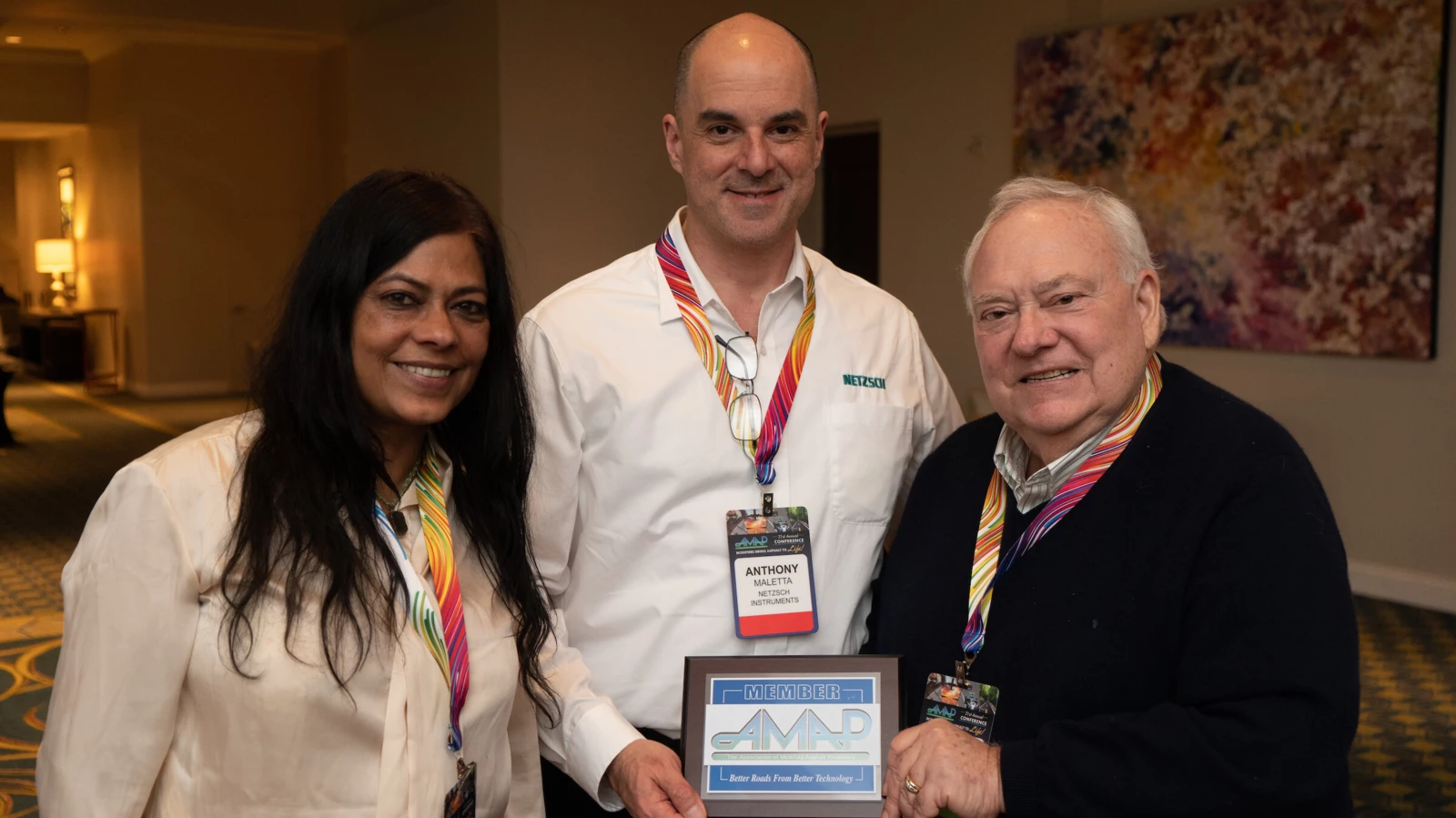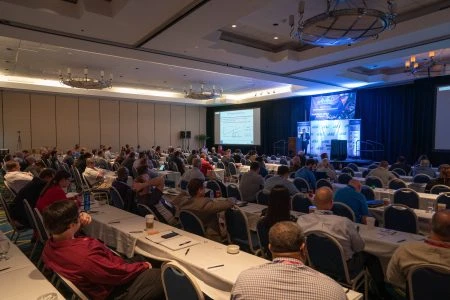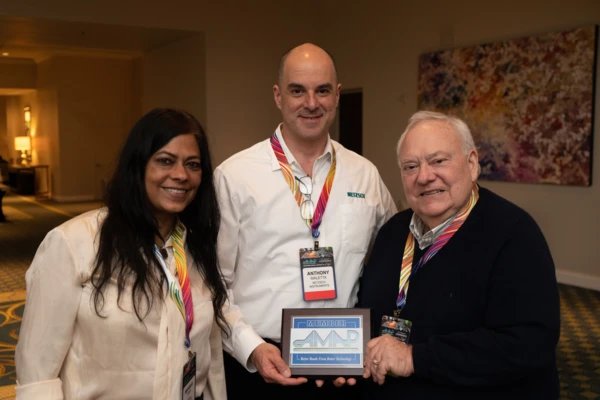
13.03.2020 by Dr. Shona Marsh
NETZSCH are New Members of AMAP
Rheology and asphalt specialist John Casola reports on the events of day one of the 2020 AMAP meeting
Day one of the recent AMAP 2020 meeting in Rancho Mirage, California
Meeting Agenda Now that the dust has settled from the recent Association of Modified Asphalt Producers meeting (AMAP) I thought it would be a good time to provide a recap to those that missed it. AMAP is an excellent event which provided those with an interest in the Asphalt market all the key information for the new year and beyond, in which, this year’s meeting didn’t disappoint in that regard! There were 270 in attendance with another 320 following the live YouTube streaming. However, before recapping the meeting I’d like to take this opportunity to share with everyone the very special event preceding the AMAP meeting.

This year the AMAP Board of Directors elected to honor Dr. Jon Epps of Texas A & M. The induction of Jon into AMAP’s Hall of Fame and being presented their Lifetime Achievement Award could not have been any more well deserved. His contributions to this industry are well documented, his mentoring heart felt, and friendships life-long. He really was an easy choice and this was a very special event. Jon was also kind enough to headline the Plenary Session where he graciously discussed the evolution, accomplishments and lessons learned in the paving industry to an eager to hear audience. All the presenters in the first session captured the theme of the meeting; ‘Modified Asphalt – Paving the way to the Future’ where they brought great insight to the markets of today and looking forward. Amy Miller, of the Asphalt Paving Alliance (APA), provided the contractors perspective where she pointed out the skilled labor shortage in the industry. A staggering 91% of contractors are looking to hire and that the need in the industry is for 1.6 million new skilled workers by 2022. And, that 94% of companies are having trouble recruiting skilled individuals. Her presentation covers the many efforts underway by NAPA and others in the industry to address this workforce shortage and the challenges to overcome. Mike Anderson, from the Asphalt Institute (AI), shared their view of the next 100 years from a materials supply perspective. AI sees the investment in human resources a key focus, where a much greater effort is expected toward internships and mentoring for students, with an eye toward the next generations. How they’ve been leading the way and including new leadership and continuing education programs in light of the increased needs for greater technical expertise in the industry. The continuing industry research efforts with goals to develop better and more advanced materials to address pavement durability, sustainability and construction, with an eye on the next generation specifications tied to a greater link to their rheological properties. Jim Moulthrop, from the Foundation of Pavement Preservation (FP2), discussed funding of the surface transportation reauthorization infrastructure bill(s) currently in Congress. He provided a great deal of funding information, much of which is very encouraging along with the challenges the market faces.

Brandon Milar, from the California Asphalt Paving Assoc., provided an interesting and enlightening discussion to the audience on the intricacies of working in California. His title says it best, ‘Building Roads in the Wild West’ which provide a bit of historical perspective to explain the rationale behind the way things work in this State. He covered the available funding and paving needs in his market. Pavel Kriz from the new AMAP member company, Exxon-Mobil/Imperial Oil, presented a refiner’s perspective, their strategy with a view into their future. Providing the needed products, addressing the challenges and economic pressures while reducing their carbon footprints around the World. Pavel presented an understanding of the various sources of crude, their yields when refined, and availability, provided a greater insight into the future of bitumen supply. With the globalization of the asphalt supply will certainly make for an interesting future. Buzz Powell, from the National Center for Asphalt Technology (NCAT), gave an insightful discussion on recycled plastics with respect to the future of asphalt pavements. NCAT sees many opportunities in the possible use of recycled plastics as a modifier for asphalt binders looking forward so long as some of the challenges are sorted out; such as compatibility, separation and fatigue properties are improved for large scale production. Peter Sebaaly, from the University of Nevada, brought us their efforts to design high performance asphalt pavements. In this regard the focus of his presentation was on high polymer mixes to significantly improve the reliability, performance and overall life. Their efforts were able to quantify improvements to all traditional modes of failure. John Harvey, from the University of California – Davis’ Pavement Research Center, brought to AMAP their work on recycled ground tire rubber in asphalt pavements. There have been more changes in CALTRANS use of materials and pavement design in the last 2 years than the previous 15 to 20 years combined, moving away from the empirical design methods. Overall conclusion: asphalt rubber has helped cost and environment.

The end of day 1 brought us excellent presentations that all were extremely informative! You can view the recording of the live streaming on YouTube. Here is your chance to listen to the presentations, yourself. Enjoy! The AMAP channel can also be found on YouTube by searching ‘AMAP2020’. Keep an eye out for my summary of day 2 of the AMAP’s 2020 meeting.